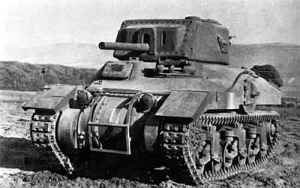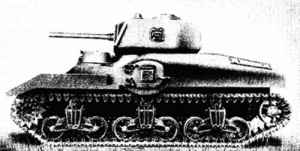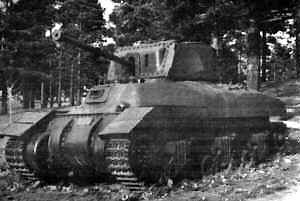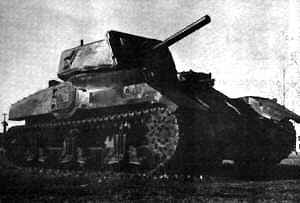Armoured Vehicle Museum >>
|
|||||||||||||||
Ram was a Cruiser tank designed and built by Canada in the Second World War, based on the U.S. M3 Medium tank. Tank production in the UK at the start of the war was insufficient to supply Canada as well, so it was decided to manufacture locally. The Montreal Locomotive Works, which was a subsidiary of the American Locomotive Company, was designated the Canadian Tank Arsenal. The current U.S. tank, the M3, was chosen as the basis for the design, but changes would be made to correct some of its shortcomings. Although the ability to mount a large 75 mm gun was suggested, the current British cruiser tank specification of a two pounder gun was adhered to. However the turret was designed to take a larger gun when one became available as battlefield experience was already showing that the 2 pdr was insufficient. A prototype Ram was completed in June 1941. General production of the Ram I began in November of the same year. By February 1942, production had switched to the Ram II model with a 6 pounder gun and continued until July 1943, when a decision was made to adopt the Sherman tank for all British and Canadian units. By that point production was 1948 vehicles, including 84 artillery observation post vehicles. Combat history As built, the Ram was never used in combat as a tank, but for crew training in Great Britain up to mid 1944. The observation post vehicles and conversions of the Ram did see active service in Europe. The tanks were rebuilt in army workshops near the front line. In 1945 the Royal Netherlands Army got permission from the Canadian government to take possession for free of all Ram tanks in army dumps on Dutch territory. Those not already converted into Kangaroos were used to equip the 1st and 2nd Tank Battalion (1e en 2e Bataljon Vechtwagens), the very first Dutch tank units ever. These had a nominal organic strength of 53 each. However it proved to be impossible to ready enough tanks to attain this strength, as the vehicles were in a very poor state of maintenance. In 1947 the UK provided 44 Ram tanks from its stocks, that were in a better condition. Forty of these had been rebuilt with the British 75 mm gun; four were OP/Command vehicles with a dummy gun. This brought the operational total for that year to just 73, including two Mark Is. In 1950 only fifty of these were listed as present. The Ram tanks (together with the Sherman tanks of the three other tank battalions, in part simply taken without permission) were replaced by Centurion Tanks leased by the U.S. Government in 1952. Some Ram tanks were used in the fifties as static pillboxes in the IJssel Line, their hulls dug in and embedded within two feet of concrete. One Dutch Ram tank, an OP/Command vehicle, survives at the Amersfoort Cavalry Museum. Ram tanks can also be seen at the Canadian War Museum, in Worthington Park at Canadian Forces Base Borden, in front of the Beatty Street Armoury in Vancouver, and at the Bovington Tank Museum (Ram and Kangaroo). |
|
||||||||||||||







